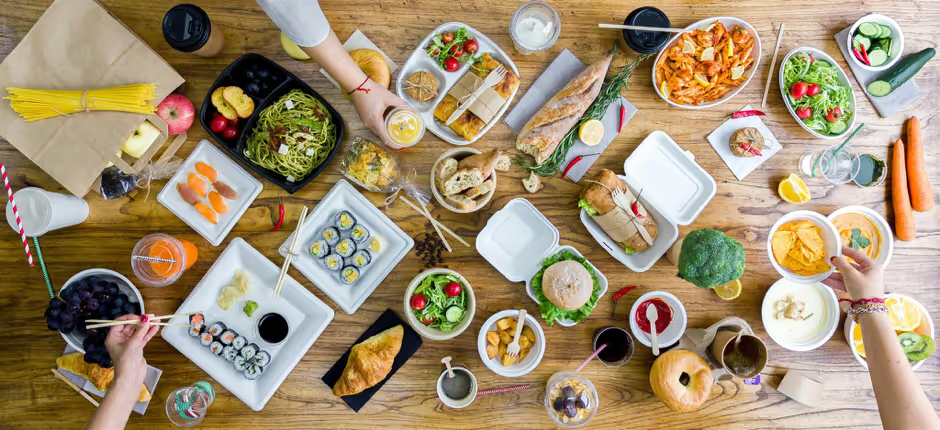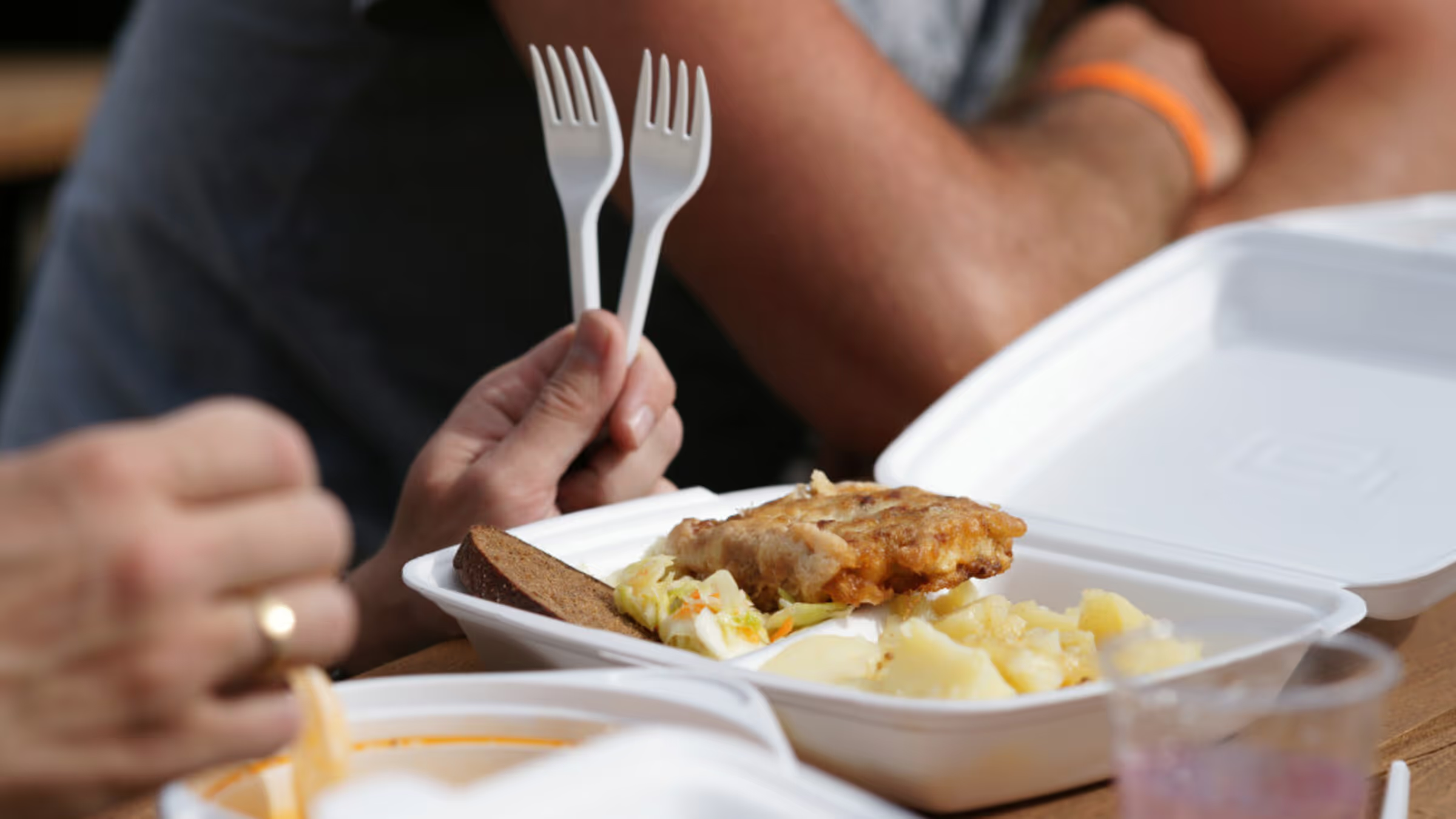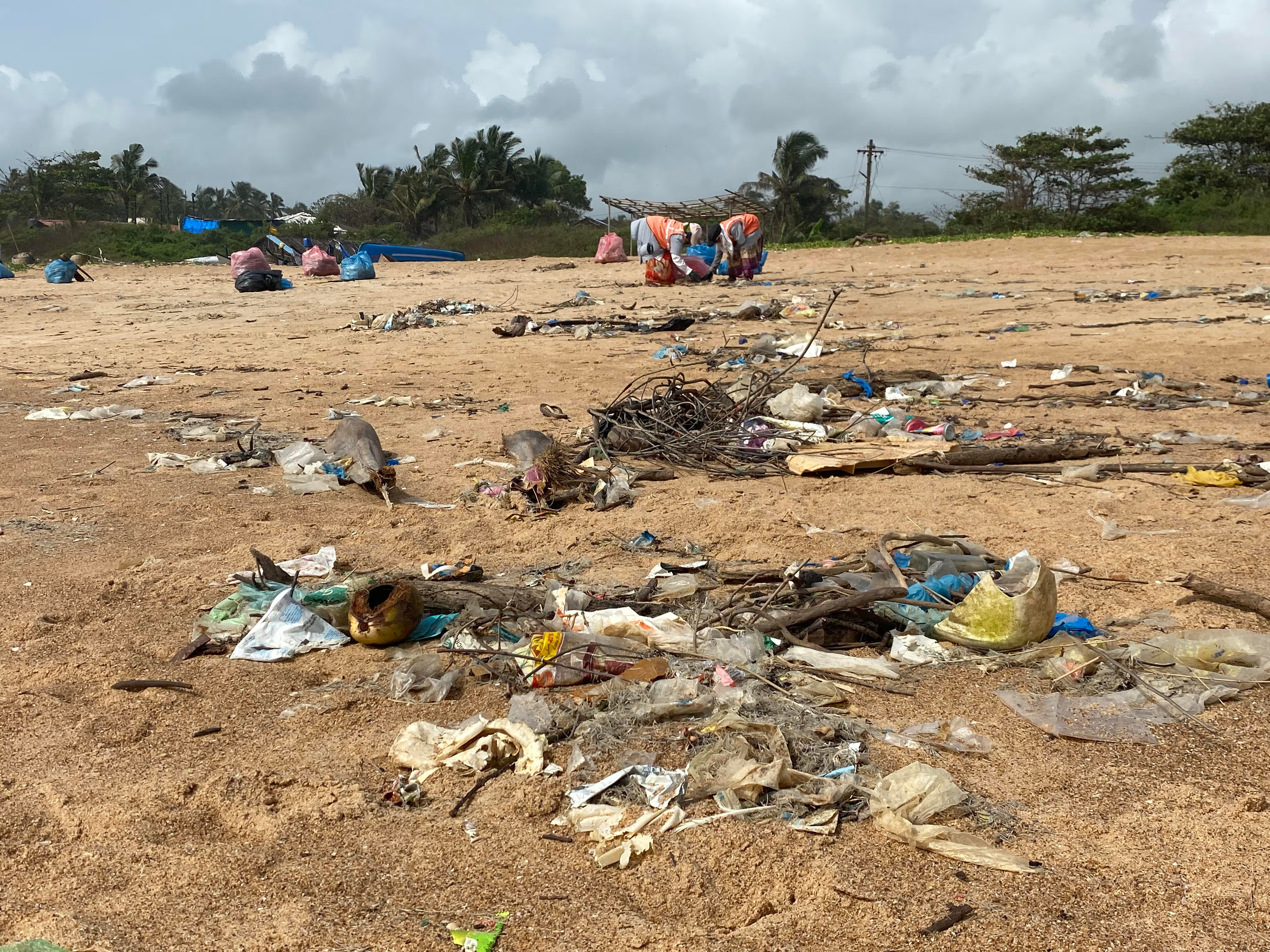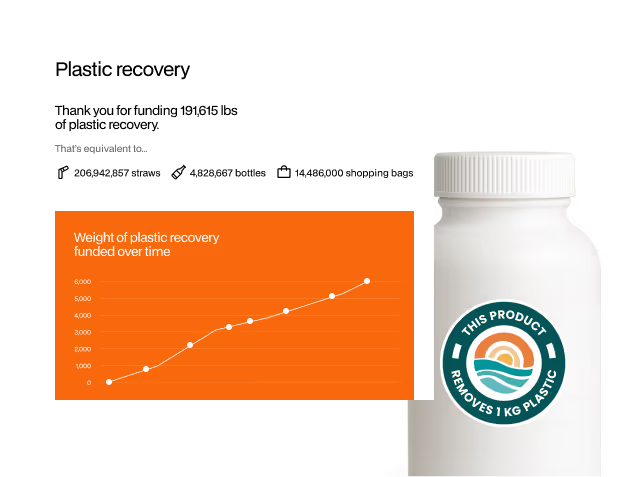The huge problem with plastic plates: India is known for its diverse flavors and plentiful choice in roadside delicacies. Every Indian city has its own unique heritage that is characterised by its unique offerings in street food. Many vendors are in the street food business for generations, honing their crafts to give dramatic entertaining performances while serving the authentic recipes of their forefathers- usually in single use plastic plates, to be immediately thrown away after the food is finished. The concept fits very well into the lifestyles of the Indian working class and elite alike, as they stop for a quick bite as they go about their days.
Of the estimated 5,600 tonnes of plastic waste generated in India daily, a huge portion of single-use plastic in our collective footprint comes from dining cutlery: plastic plates, spoons and forks that get served with our food. Vendors generally prefer disposable cutlery as it saves them a lot of time otherwise spent cleaning plates, allowing them to serve more customers especially during peak hours.
The fast-food industry adds further fuel to the fire, with modern food delivery companies using various packaging techniques to make their products more attractive to customers. New ‘tamper-proof’ packaging methods are heavily reliant on plastics to ensure the parcels are not opened before delivery. Though care is taken to ensure packaging consists of a minimal amount of materials, it still remains that a large portion of it is not biodegradable.
It is an equally common sight to find small piles of trash not too far away from these vendors, consisting mainly of plates and utensils dumped by the customers.

The common materials used in these disposable cutlery are:
1. Styrofoam
These plates are lightweight and styrofoam is very soft compared to tougher plastics, which do not break as easily. They cost around Rs. 0.5 per plate. Hot foods, oily foods, acids and alcohol cause Styrofoam food containers to partially break down, leaching styrene into whatever food the container is holding.
2. Aluminum Plastic
One side of the plate is made of cardboard and the other side is covered with a thin plastic film that prevents any leakage or spillage from happening. Their cost ranges between Rs. 0.3 to Rs. 1.5 per plate depending on the complexity and number of compartments.
3. Plastic
One of the primary reasons to use plastics over metal is that it is sanitary. Plastics are very instrumental in helping to prevent the spread of disease. Metal cutlery must be cleaned after every use. Plastic cutlery reduces the amount of water and soap used to clean utensils frequently. Plastics are less expensive to manufacture. Additionally, plastic cutlery is easy to manufacture and ship in bulk, making it the most economical option for stocking a restaurant.
The Clean Solution

Our increasing dependence on plastic products for our food consumption habits indicates that we need to opt for a more environmentally friendly alternative to plastic utensils for dining to maintain the easy access that street food is known for.
The solution lies in the 3 R’s of waste management:
Reduce the use of disposable utensils.
Reuse utensils instead of simply producing new ones.
Recycle utensils that have already been manufactured.
Street food vendors that opt to reuse metal or plastic plates do this by washing their utensil inventory as it gets used by customers. They usually have very little time to do this, while consequently preparing dishes to meet customer demand. This can lead to plates being improperly washed, causing various health and safety concerns to arise, such as exposure to E. coli and other bacteria. Simply washing a plate isn’t enough to kill any disease-causing germs that are a major concern in roadside environments where hygiene is difficult to maintain.
My friends and I were presented with this problem statement at IISc Bangalore’s Reimagine Waste hackathon, where teams of innovators gathered to develop products for reducing our urban plastic footprint. We worked closely with garbage collectors (colloquially referred to as ‘pourakarmikas’) to hear their key grievances in the waste generation and collection cycle. They faced various problems including manual segregation of various types of waste and accumulation of waste in public areas from street food vendors.
Our solution targeting street food vendors is SteamIt, a gas-powered portable appliance that can be used by food vendors to sanitize metal plates while serving customers.
Steam cleaning kills 99.9% of bacteria, germs and dust mites. This includes E. coli, Staph bacteria, Salmonella and other microorganisms, surface molds, bacteria, viruses and various other germs caught from unclean street food. At 175 degrees, pressurised steam can be used to sanitize plates quickly and effectively.
SteamIt is designed to be powered either using an electric heating coil or the excess heat energy generated while cooking on a gas flame. This means it can be used by vendors even when hawking food in the street.
A spring-activated system of valves is used to direct a stream of superheated steam at the plate, killing most bacteria and removing any particulate matter. This water is then collected in a drain and reused for cleaning.
We were awarded a research grant to further develop the concept at IISc’s Center for Product Design and Manufacturing.
The Modern Problem

In more recent times, food delivery businesses have become a large source of single-use plastic waste. Unlike dining at the restaurant, food delivery requires the food to be packed in disposable containers that are used to transport the food to the customer. These containers are not reclaimed later and are meant to be disposed of after use. This presents delivery companies with the difficult tradeoff of providing simple, green packaging or providing a unique and attractive presentation of their food.
If the restaurants and delivery companies are held more accountable for the waste generated as a by-product of their business, they would prioritise the use of greener packaging instead of the usual plastic packaging. Biodegradable containers are a lot better suited to the scenario of food delivery containers that are used for a very short time, as opposed to plastic packaging that is used for food items that require a long shelf life.
Popular alternatives are made of fibre or paper and contain no plastic elements. This is still not an optimal solution as the time taken to decompose a single unit of this packaging is still huge in comparison to the duration of use. Going forward, we need solutions to food delivery where the packaging can be better integrated with the circular economy to generate less waste.
Even a single plastic plate that does not end up in the oceans is a win for the environment. Curb your own plastic consumption and mitigate your impact on the planet by going Plastic Neutral with us today.



.avif)








